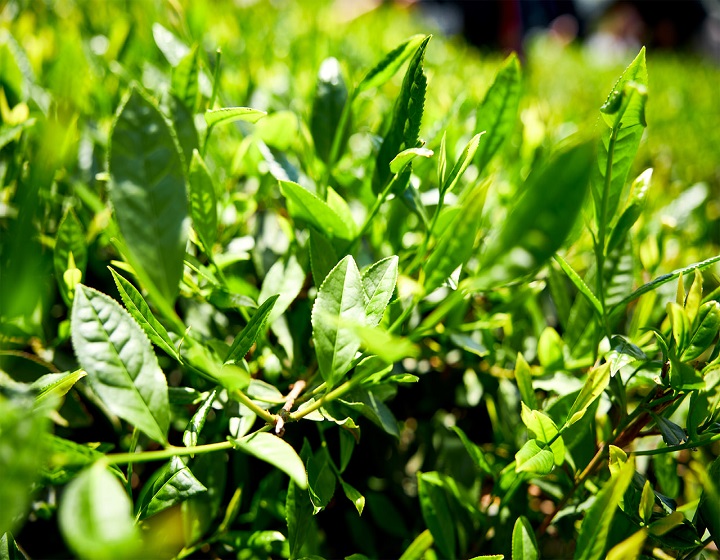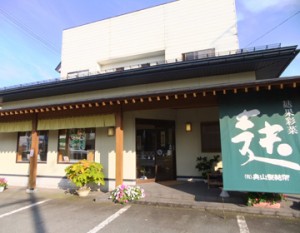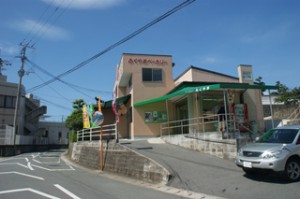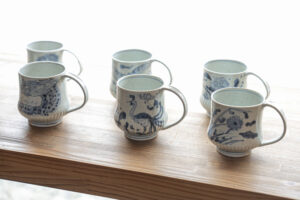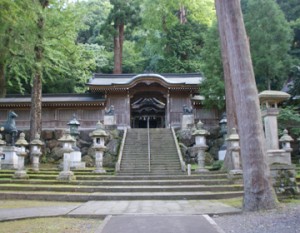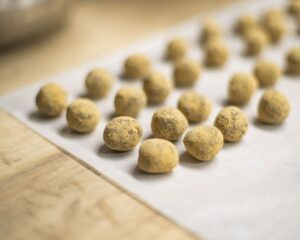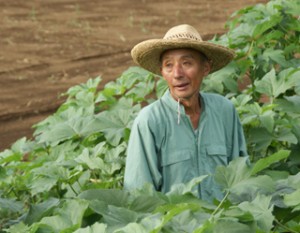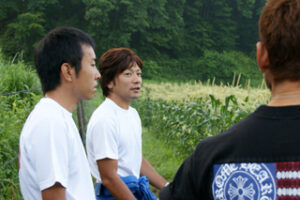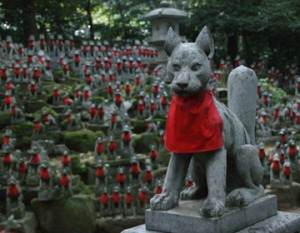We have traveled all over Japan and encountered “Japanese” “honmono” only because we visited those places. This is a travel magazine that provides an opportunity for as many people as possible to learn about the wonders of Japanese culture. Nihonmono” has traveled to “tea” production areas scattered all over Japan to meet tea producers and hear their stories about the cultivation of tea leaves, their commitment to tea production, and the taste of the resulting tea.
The History of Tea and Its Varieties: Shizuoka Tea, Uji Tea, and Sayama Tea are the Three Best Known Teas from Long Ago
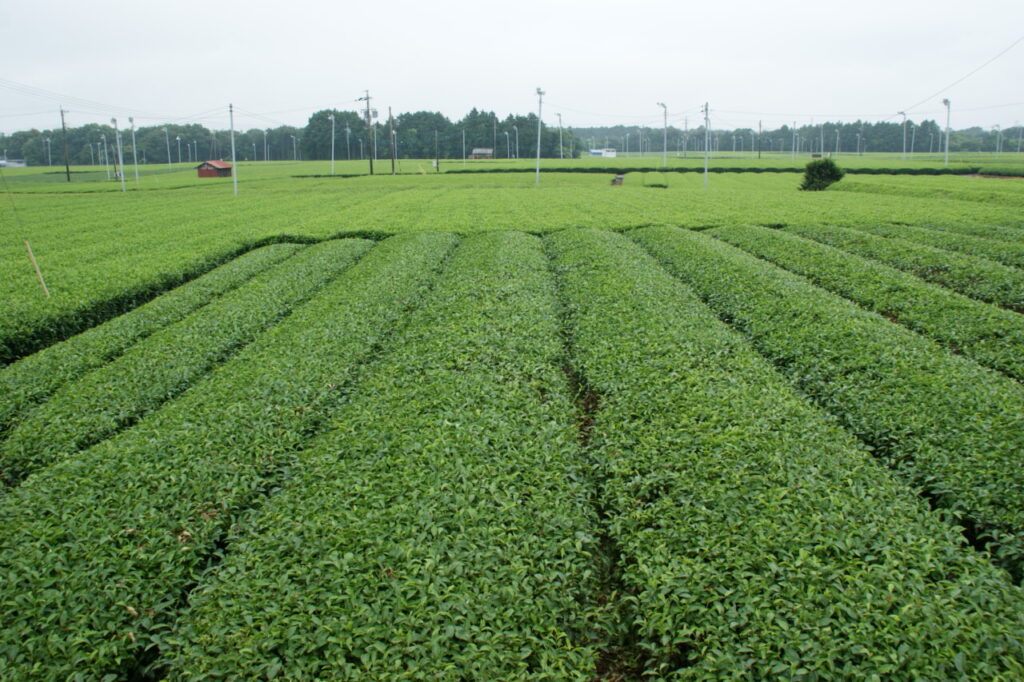
Tea culture has been enjoyed in Japan for a long time. Tea cultivation has spread to various regions, and today tea is grown in a wide range of areas from Miyagi in the north to Okinawa in the south.
It is said that there are more than 120 varieties of Japanese tea, including “Yabukita,” the most widely grown in Japan, “Yutaka Midori,” an early variety with a well-balanced astringent taste that is second only to Yabukita in terms of cultivation area, and “Asatsuyu,” a high-quality tea that is also known as natural gyokuro. The terms “sencha,” “gyokuro,” “hojicha,” and so on, which we often hear, refer to different cultivation and production methods. The taste of Japanese tea differs greatly depending on the variety of tea leaves used and the method used to make it.
In addition to these differences, it is important to know the place of production. Even tea of the same variety and production method can have a different taste depending on its production area. For example, even in Shizuoka Prefecture, one of the most famous tea-producing areas in Japan, the aroma, taste, and aftertaste vary depending on the area where the tea is harvested. This is because the cultivation methods and harvesting times are different in each area, depending on the climate.
The three most famous teas in Japan have long been known as Shizuoka tea from Shizuoka Prefecture, Uji tea from Kyoto Prefecture, and Sayama tea from Saitama Prefecture.
What about the production of “aracha” tea? Aracha is tea leaves that have been picked, steamed, rubbed, and dried by tea farmers and are ready to be stored. After the tea farmers produce the tea leaves, tea merchants purchase the tea leaves, blend them, and heat them before delivering them to consumers as the final product.
Shizuoka Prefecture, which accounts for 40% of the nation’s tea plantations and is the birthplace of Yabukita, is the largest producer of rough tea, in order from No. 1 to No. 2. Kagoshima Prefecture has developed into a major tea-producing area since the end of World War II, thanks to the large-scale mechanization of its farmlands. Mie Prefecture produces the largest amount of Kabusecha in Japan, and Miyazaki Prefecture produces “Kama-iricha” (tea roasted in a kettle) in the northwestern mountainous area, which is rare in Japan. Kyoto Prefecture is known for its nationally famous brand of tea, Uji tea, and is the largest producer of premium teas such as gyokuro and matcha (according to the Ministry of Agriculture, Forestry and Fisheries’ “Survey of Crop Statistics”).
Kagoshima Prefecture boasts the second largest production of rough tea after Shizuoka Prefecture, which boasts the largest harvest of any prefecture in Japan. According to data from the Ministry of Agriculture, Forestry and Fisheries, Shizuoka Prefecture will produce 29,700 tons in 2021, or 42% of the total, while Kagoshima Prefecture will produce 26,500 tons, or 37% of the total. These two prefectures account for nearly 80% of the nation’s production.
Kagoshima Prefecture is the unquestioned leader in terms of production volume. Many brands of Shizuoka tea, such as “Kawane-cha” and “Kakegawa-cha
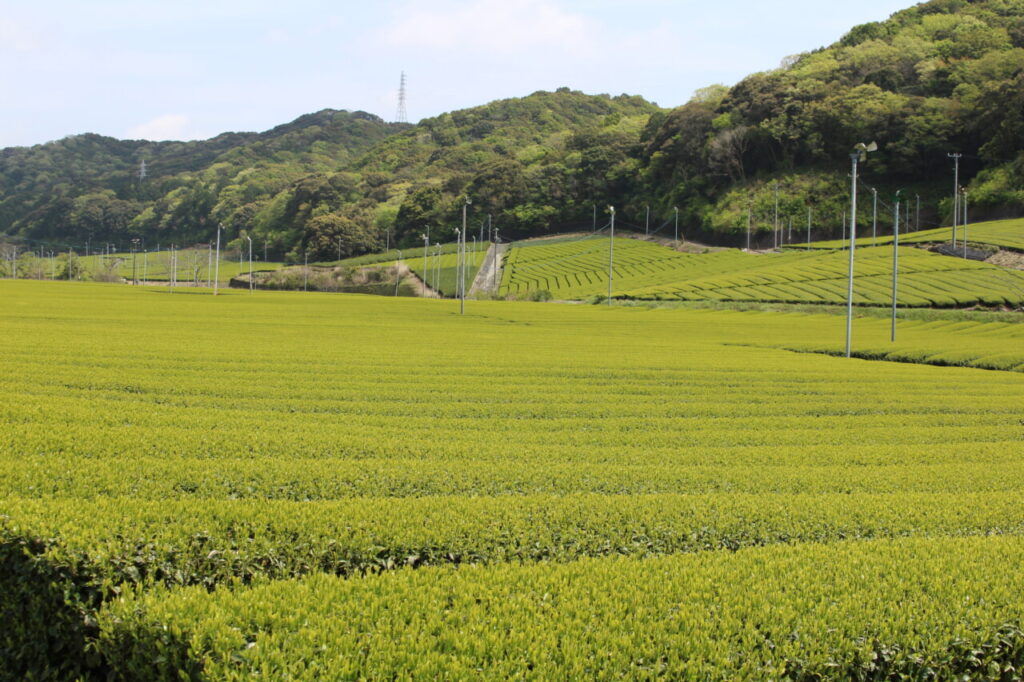
Even those who are not so familiar with Japanese tea probably think of Shizuoka Prefecture first when they think of tea production areas.
As mentioned above, Shizuoka’s production of rough tea has been the number one producer since the 1950s, when the results of crop statistics surveys were still available. It is the absolute king of tea production.
Tea leaves cannot grow in too cold or too hot weather. The average annual temperature of 14℃ to 16℃ or higher is considered necessary for tea leaves to grow. Shizuoka is blessed with a mild climate and moderate rainfall, which are just right for growing tea leaves, and the rising air currents from the sea create a mist that moderately blocks ultraviolet rays. This allows for the harvesting of high quality tea leaves with a rich flavor and reduced astringency.
In addition, the city of Shizuoka has been prosperous as a tea wholesaler since the Edo period (1603-1868) and further developed when the Port of Shimizu was opened as an international trading port in 1899. The opening of the international trading port of Shimizu in 1899 led to further development of the city, and a virtuous cycle was born as tea factories, tea-related companies, and tea manufacturing equipment suppliers gathered in the area to export tea, and the tea plantations themselves expanded, leading the city to its current position as the top tea producer.
In Shizuoka Prefecture, each region has its own distinctive brand of tea. Kawane-cha ” is characterized by its clear golden color and refreshing taste, ” Kakegawa-cha ” is elegant, light, and has no bitterness, and is popular among men and women of all ages; ” Tenryu-cha ” is attractive for its moderate astringency and strong flavor; and ” Honyama-cha ” is said to have been loved by Ieyasu Tokugawa for its mellow flavor and moderate bitterness. The tea is produced in the following three regions. It would be fun to visit multiple tea-producing regions and compare their teas.
Click here for producers in Shizuoka Prefecture introduced in Nihonmono
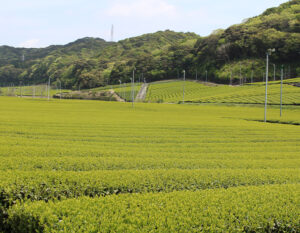
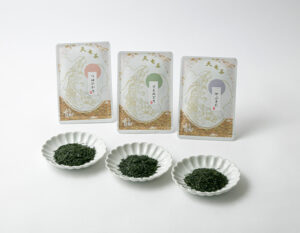
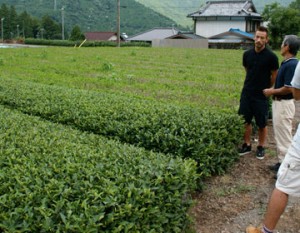
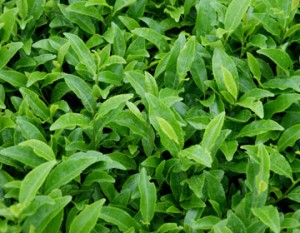
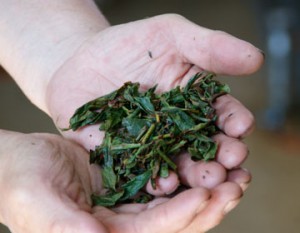
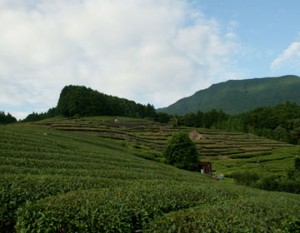
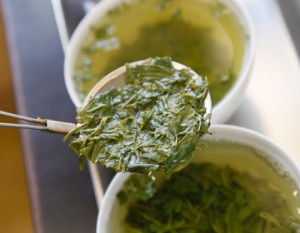
Shizuoka is one of the largest tea-producing areas in Japan. Kagoshima has many early and rare varieties of tea.

Kagoshima Prefecture started tea cultivation in earnest after World War II. Although Kagoshima does not have a long history as a tea-producing region, it has rapidly grown into a major tea-producing area by taking advantage of its mild climate and vast flatlands, and by adopting large-scale mechanization of farmland.
In recent years, high-quality teas produced in Kagoshima Prefecture, such as “Chirancha” produced in the Chiran and Ei area and “Kirishima-cha” produced in the Kirishima region, have become well known throughout Japan. In addition to the popular cultivation of early varieties such as “Yutaka Midori” and “Sae Midori,” Kagoshima also grows a rare variety called “Asanoka,” which was bred in Kagoshima Prefecture, and is a feature of the rich variety of Japanese teas available.
Click here to see the producers in Kagoshima Prefecture introduced in Nihonmotsu.
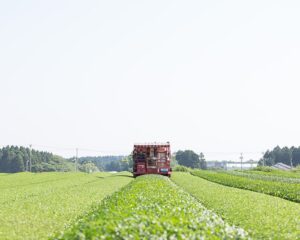
In recent years, some travel agencies have organized trips to tea production areas. It seems to be the ultimate luxury to savor a cup of freshly brewed tea while enjoying the beautiful scenery created by the fresh green tea fields in an area blessed with clean water and air and rich in nature, which can only be seen at that time of year.
A journey through the story and history of tea unique to each region
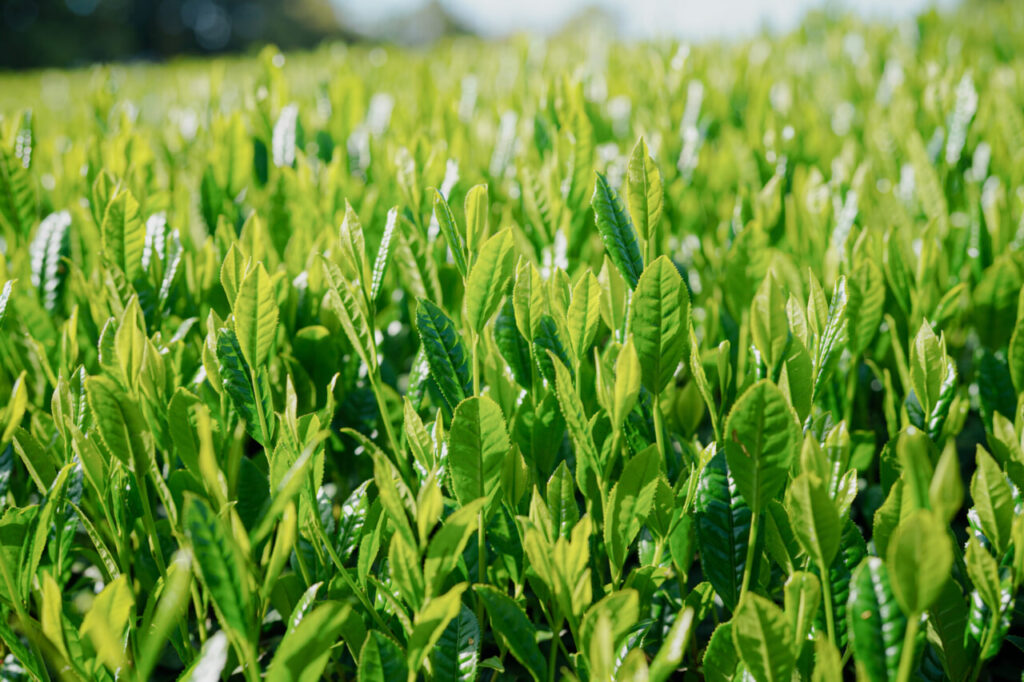
Here, we would like to introduce some of the teas covered by Nihonmono that will enhance your travel experience.
Teas you will encounter on a traveling train – tea farmers of Sonogicha in Nagasaki and Ureshino Tea in Saga produced teas for trains in Kyushu.

Traveling by train is a great way to immerse yourself in the feeling of traveling while enjoying the scenery from the train windows. Accompanying you on this journey is a delicious cup of local tea. There is a train in Kyushu, a treasure trove of sightseeing trains, where you can enjoy such a trip. We would like to introduce a train that uses tea from a tea-producing region covered by Nihonmotsu.
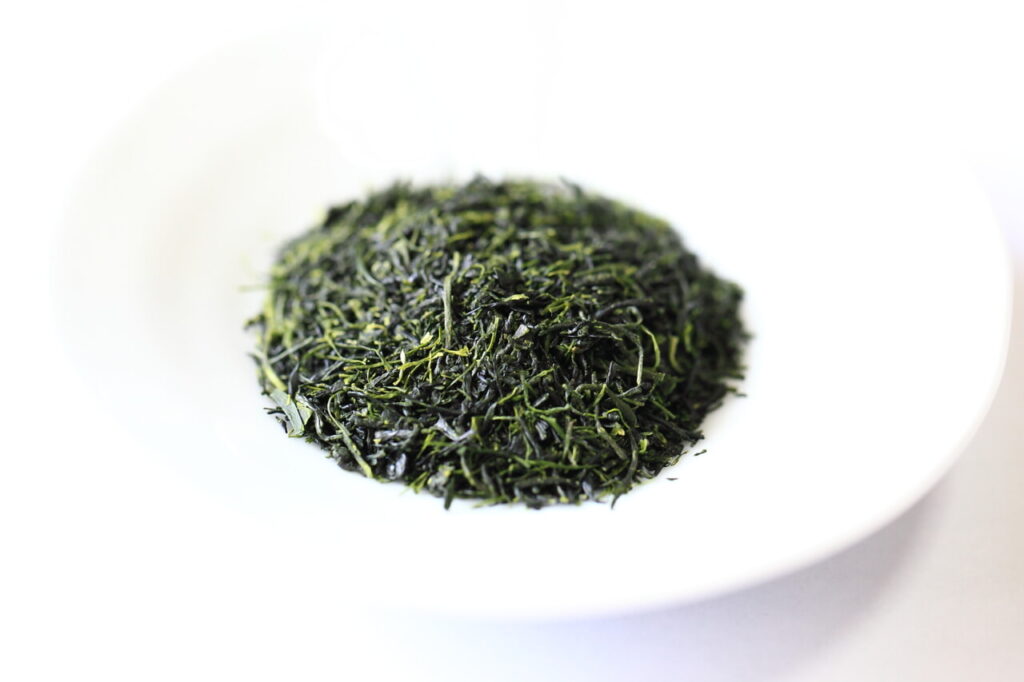
Chayu, a tea farmer in Higashi Sonogi, Nagasaki Prefecture, is supplying Japanese tea to JR Kyushu’s “Nanatsusei in Kyushu” cruise train. The tea available on the Natsussei is a brand called “Asatsuyu,” which is the company’s signature product and has won numerous awards, including the Minister of Agriculture, Forestry and Fisheries Award, the Emperor’s Cup, and the “Japanese Tea AWARD,” in which ordinary consumers decide the quality of the tea. It is characterized by its sweetness and flavor, with almost no astringency or bitterness despite its richness. The cultivation area of the “Asatsuyu” variety of tea leaves used for this tea is about 1% of all tea plantations in Japan. It is a rare tea suitable for Japan’s first luxury sleeper train.
Address: 874, Isshi-go, Higashisonogi-cho, Higashisonogi-gun, Nagasaki Prefecture
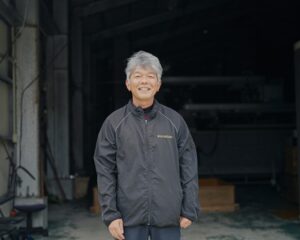
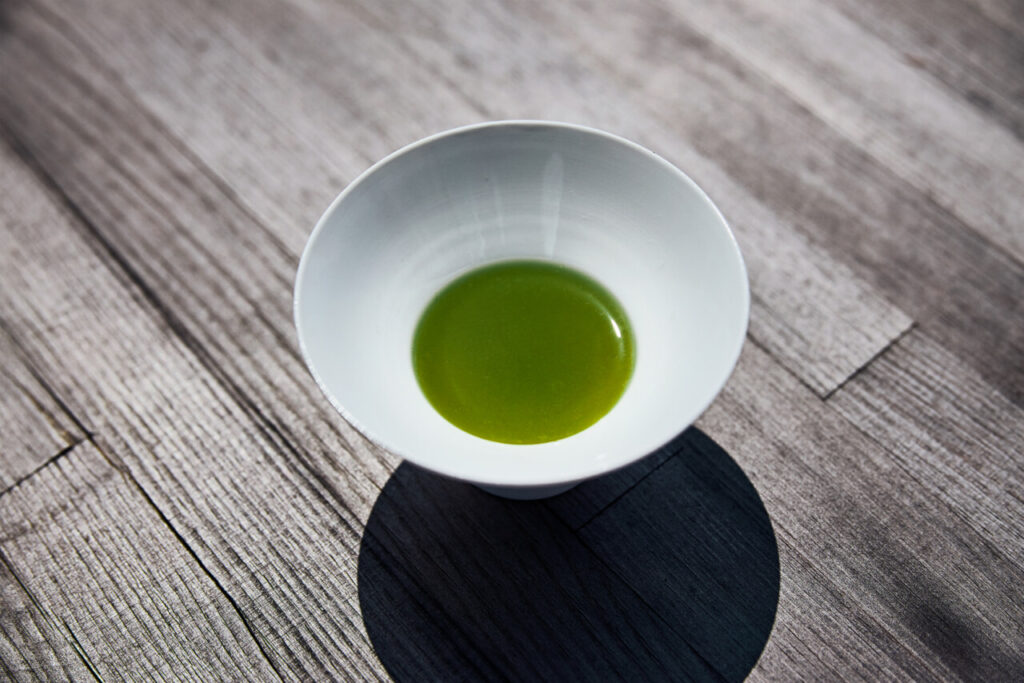
The tea sold on JR Kyushu’s sightseeing train “Futatsuboshi 4047” running between Saga and Nagasaki is “Futatsuboshi Ureshino-cha” produced by Soejima-en, a tea farm in Ureshino City, Saga Prefecture, which has been in operation for four generations. The variety used is “Asatsuyu,” the same as Chayu. The tea is grown with great care in a tea plantation specially created for this tea by Soejima-en, which insists on low-chemical cultivation. The taste is characterized by the mild flavor and delicious taste of “Asatsuyu,” which is also called “natural gyokuro,” as well as a lingering sweetness that leaves no unpleasant aftertaste.
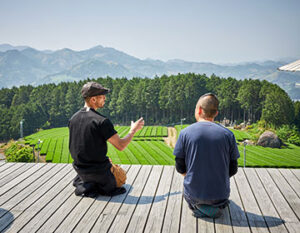
Lactic acid fermentation of tea leaves, an important intangible folk cultural asset

Kamikatsu-cho is a small town in eastern Tokushima Prefecture. The Awa-bancha tea produced in this town is a post-fermented tea made by fermenting tea leaves with lactic acid bacteria, and was designated an “Important Intangible Folk Cultural Asset” by the national government in 2021.
Awa Bancha is made by local women. They go through the bushes to find native tea trees, pick the leaves, remove branches and debris, boil them in a large pot, and then rub them with a machine. The leaves are then transferred to a vat, where they are stepped on by a person wearing boots to expel air, and the boiled water is poured into the vat and weighed down with stones to soak for about four weeks, during which time lactic acid fermentation occurs. This is commonly known as “pickle tea. The tea leaves ferment during the pickling process, producing a sweet and sour, mild and unique flavor. The tea leaves are then dried in the sun.
The local people have been helping each other to make this unique tea using recipes handed down from one family to another, and each family has its own unique flavor. It is well worth a visit.
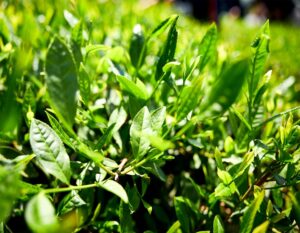
Keeping the fire of tradition burning: Fully fermented tea that has been produced for more than 400 years
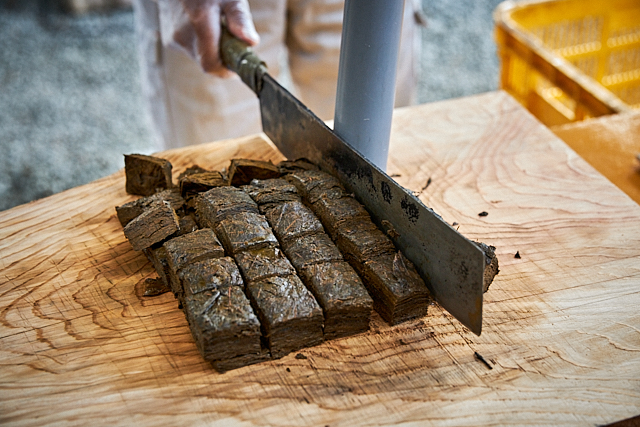
Goishi tea, a fully fermented tea that has been produced in Otoyo Town, Nagaoka County, Kochi Prefecture, for more than 400 years, was once in danger of disappearing at the end of the Showa period, when there was only one producer. In order to preserve the fire of tradition that was about to disappear, a cooperative has now been formed to continue production.
The taste of this tea depends on fermentation by microorganisms and mold fungi found only in Otoyo Town. The microorganisms on the “mushiro,” a rug used in the tea making process, and the “muro,” a storage room used during fermentation, do important work for “Goishi Cha” tea. It can be said that this tea has a unique flavor that can only be produced in this area.
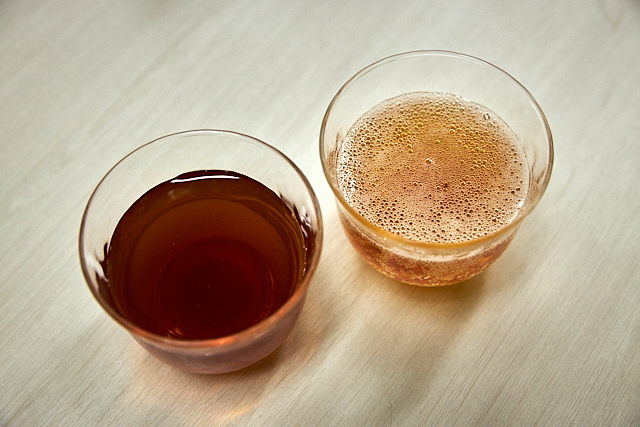
This tea is fermented in two stages: “molding” by microorganisms and mold fungi on the “muro” and “soaking” in the tea leaves, which not only produces a complex flavor that is both sour and mild, but also increases the amount of vegetable lactic acid bacteria in the tea. The amount is said to be 23 times greater than that of pu-erh tea, and its remarkable effects have been announced at academic conferences and other occasions, such as its ability to regulate the intestines, prevent hay fever and influenza, suppress hyperlipidemia and arteriosclerosis, and lower blood pressure.
Tea fermented by microorganisms in this way is said to be rare in the world. We hope you will experience its taste, efficacy, and individuality.

Learn how to make and taste the tea of a tea master who has mastered the art of Japanese tea making.
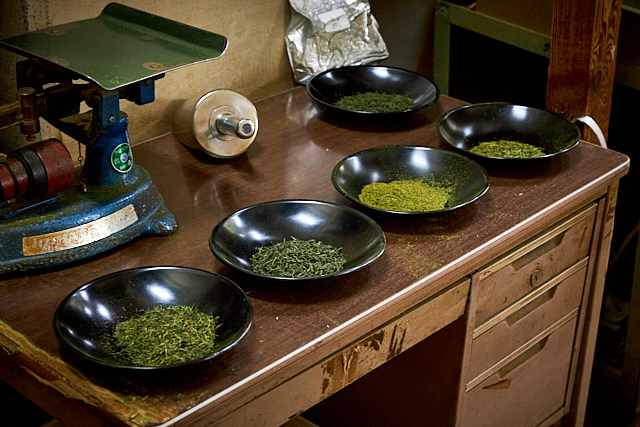
Japanese tea comes in a wide variety of regions, varieties, and production methods. For those who are not sure which one to choose, or who want to make sure they choose the right one, the key word is “Chashi-Judan” (tea master Judan). (The correct term is “Jyu-dan of tea judging technique.)
A tea master is a person who purchases rough tea produced by farmers, blends it while assessing the characteristics of the tea leaves, and processes it into the final product through various processes such as fire-roasting.
The National Tea Judging Techniques Competition has been held annually since 1956 to enhance the tea judging and identification skills required for this purpose. The title of “tea master 10-dan” is given to tea masters who have attained the highest rank of Judan in the four competitions of “guess the variety,” “guess the tea season,” “guess the production area,” and “guess the production area by drinking. As of 2022, there will be only 18 tea masters in Japan who hold this title. They are the highest level of professionals who know all about Japanese tea.
Nihonmono has visited seven Judan tea judging technicians and interviewed them about their earnest attitude toward tea production.

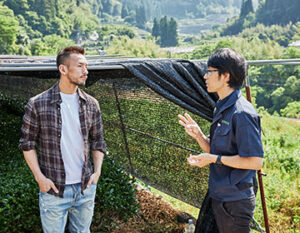
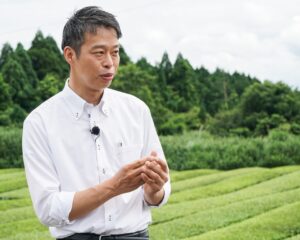


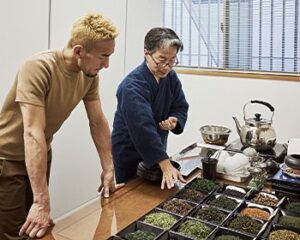
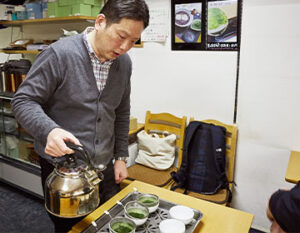
Some of the tea masters are involved in famous brand-name teas such as Yamecha and Uji-cha. A must-read.
The Future of the Japanese Tea Industry in a New Phase
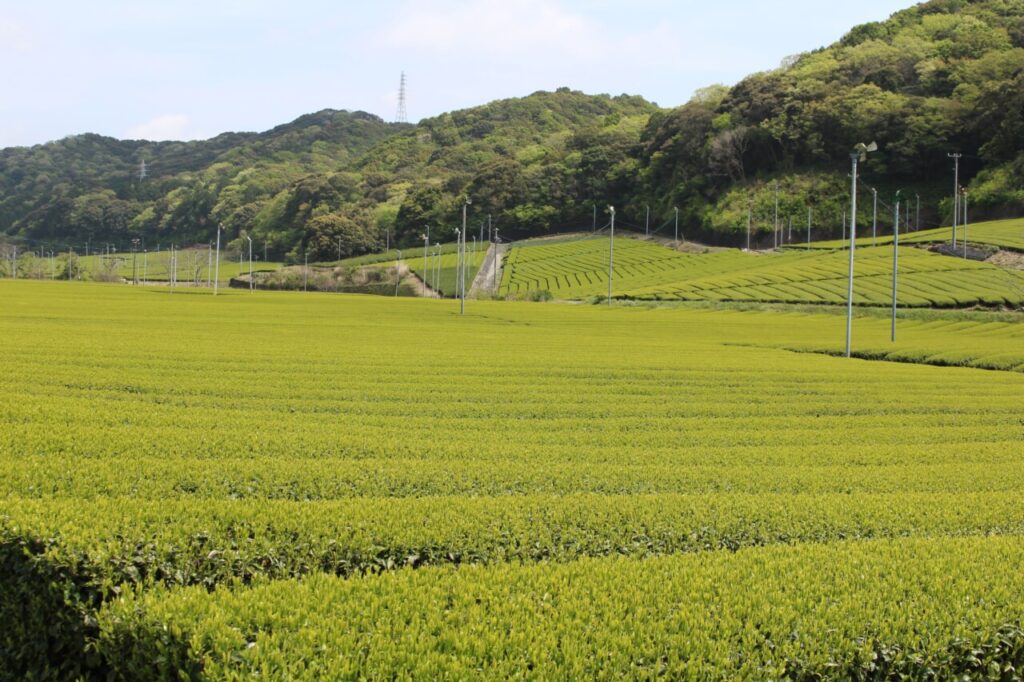
Japan’s tea culture has been built up over a long history, but domestic tea production is on the decline.
According to the Ministry of Agriculture, Forestry and Fisheries’ “Situation Concerning Tea” (October 2022), statistics from the past 20 years show that the number of tea farmers has decreased to less than half, and the average unit price of tea leaves has dropped by about 25%.
The production of tea leaves in 2021 has been on a gradual downward trend over the past decade, although the production of tea in Japan recovered somewhat in 2020, when the spread of the new coronavirus was serious, due to the demand for tea leaves.
On the other hand, tea exports have been growing steadily for the past 10 years and will reach a record high of 20.4 billion yen in 2021. Powdered tea (including matcha) is the most common form, and the U.S. accounts for more than half of all exports. In addition to the popularity of matcha in the form of matcha lattes and flavored sweets, unsweetened green tea is also favored by health-conscious and organic-minded consumers, and some IT companies in Silicon Valley offer green tea as a free work conditioning drink to improve concentration. It can be said that attention to Japanese tea from overseas is increasing.
Among the producers interviewed by Nihonmono, many were also taking on the challenge of reaching out to the rest of the world. There are also producers who are actively engaged in direct sales, successfully responding to home and individual demand triggered by the Corona disaster stay-home , and succeeding in branding and retaining customers. One such producer, Masatoshi Matsuo of Chayu, a farmer in Higashisonogi-gun, Nagasaki Prefecture, who also does a lot of business with overseas customers, says the following.
Tea brewed in a teapot is wonderful, but the tea industry needs to offer a way to drink tea that tastes good without the hassle of brewing it in a teapot. It is time to think about what kind of Japanese tea is required by people in today’s lifestyle. I think the time has come for us to think about this.
The Japanese tea industry has entered a new phase. The efforts of tea growers to find a way to survive amidst this new phase and the tea-making techniques that have been passed down from generation to generation will continue to bring us delicious tea. Nihonmono will continue to follow the passion of tea growers across Japan to keep the fire of tea burning.
Other tea-related professionals visited by Nihonmono
Nihonmono has interviewed many tea professionals. Here we introduce those who could not be introduced in the article.
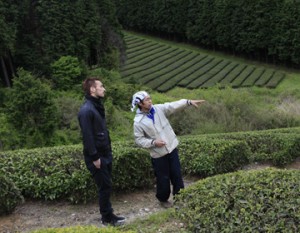
What did you think? Did you find a tea that you would like to try, give as a gift, or visit?
What Nihonmono would like to recommend to you is to taste the teas carefully nurtured by the tea growers. Good tea”, such as the aroma that rises softly and the feeling of contentment that comes from just drinking it, will fill your five senses with the joy and pleasure of tasting tea.
Once you learn about such teas, you will surely want to serve your favorite teas to your loved ones. And you will want to learn more about tea. At such times, we hope you will enjoy your encounter with tea by referring to Nihonmono’s articles.
The more you know about tea, the deeper the world of tea becomes. In Japan, there are still many wonderful teas and stories of tea producers that we would like you to know. We at Nihonmono will continue to support the tea industry as a whole by sharing these stories so that the world of tea, an important culture that represents Japan, will become more familiar to people.



